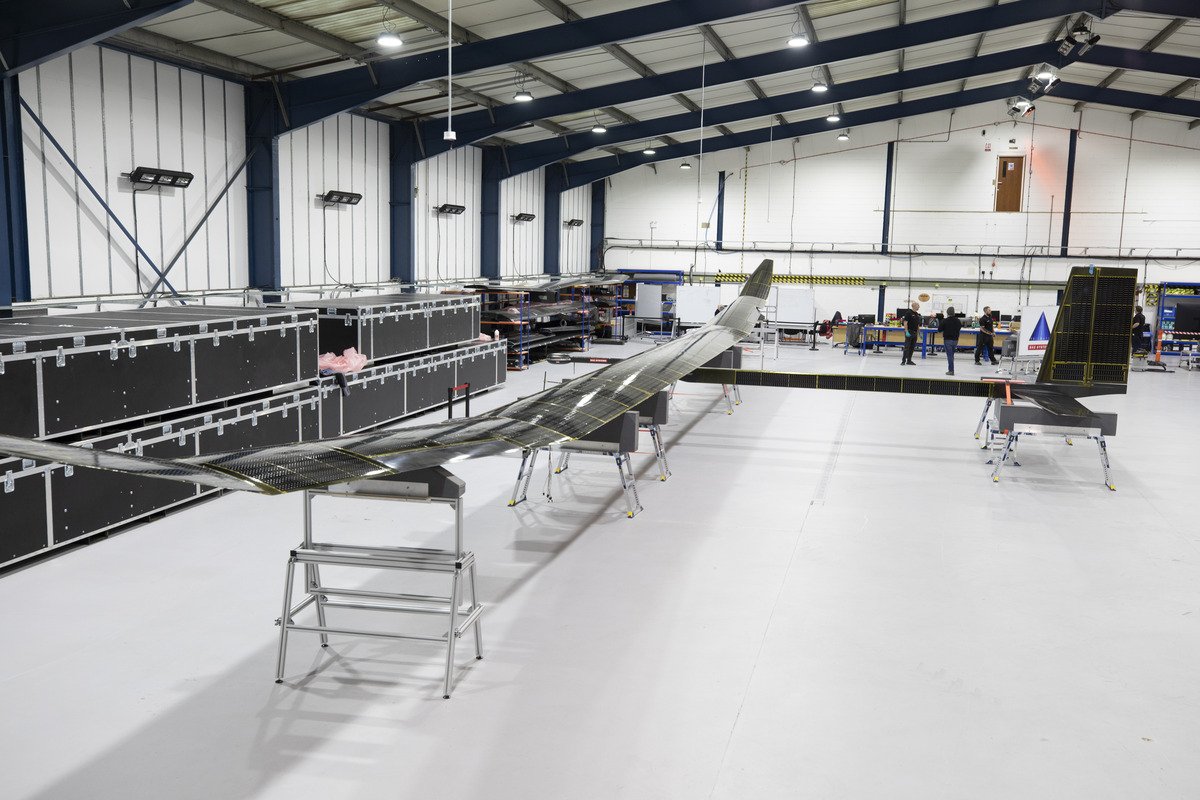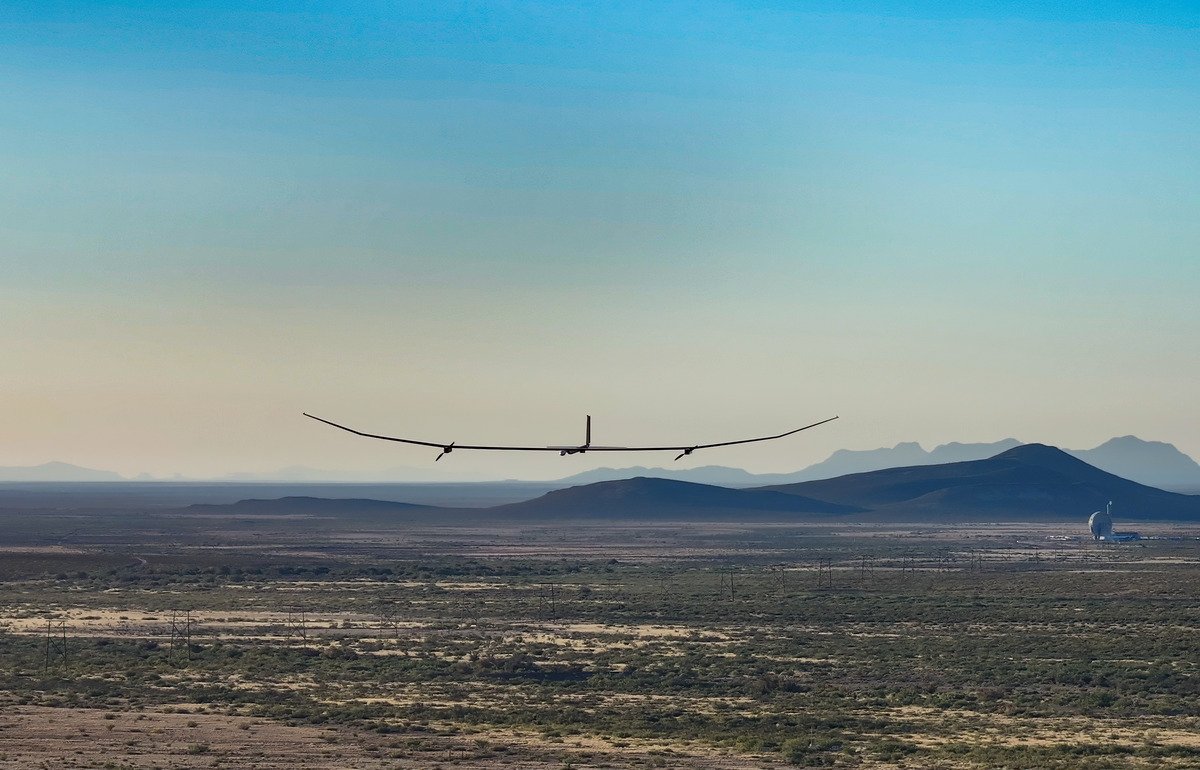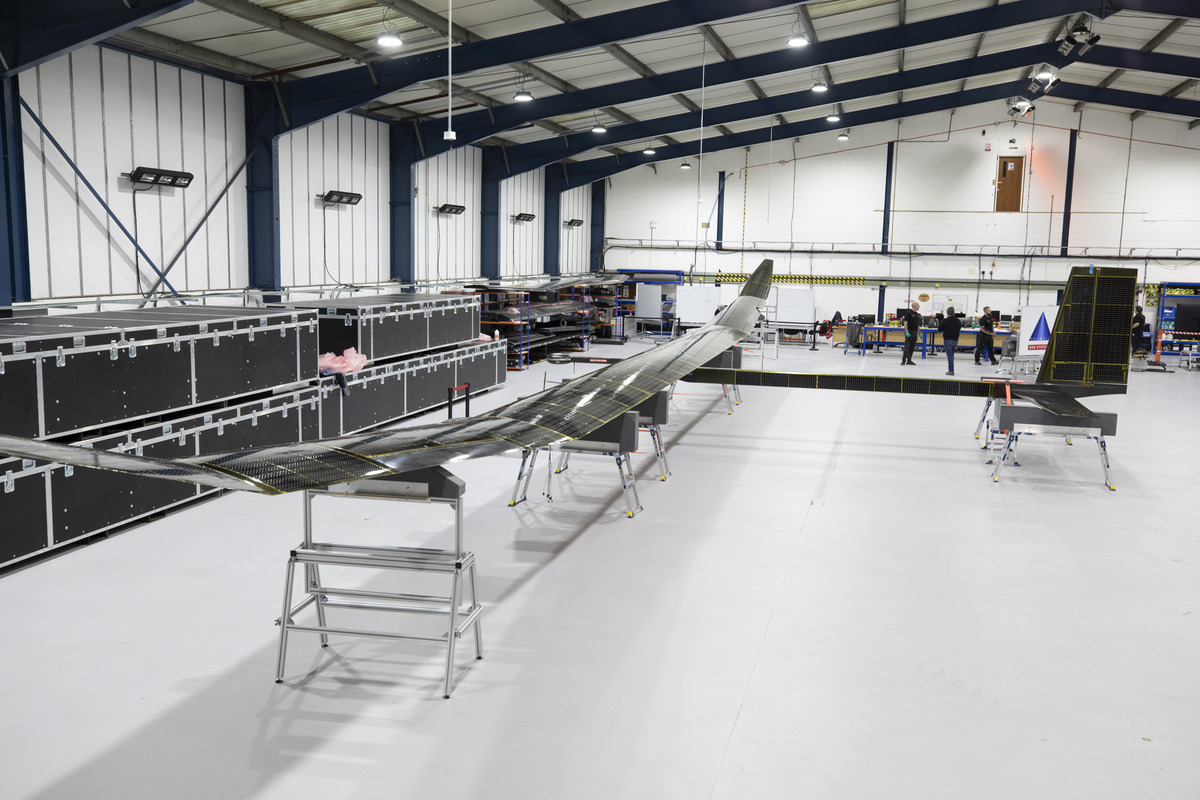Sitting in a hangar in a quiet industrial estate in southeast England, a prototype unmanned aircraft is waiting to be shipped to a U.S. military site in New Mexico.
The one-of-a-kind, upgraded Block 20 Phasa-35 solar-powered aircraft is heading across the Atlantic for its next round of Pentagon-backed tests, and its developers say it could be the key to unlocking a new way for militaries to carry out surveillance missions.
The Phasa-35 is essentially a “steerable satellite,” Bob Davidson, the chief executive of U.K.-based defense giant BAE Systems’ subsidiary company Prismatic, responsible for creating the system, told Newsweek. The Phasa-35 technically belongs to a newcomer category of systems called High Altitude Pseudo Satellites, or HAPS.
But unlike satellites, “we can launch the aircraft and then steer it to anywhere we would want in the world within a number of days,” Davidson said. It can stay fixed, hovering over a single point for months, he added.

The Block 20 Phasa-35 High Altitude Pseudo Satellite (HAPS) Uncrewed Aerial System (UAS). The one-of-a-kind system, currently in southeast England, is heading across the Atlantic for its next round of Pentagon-backed tests, and its developers…
The Block 20 Phasa-35 High Altitude Pseudo Satellite (HAPS) Uncrewed Aerial System (UAS). The one-of-a-kind system, currently in southeast England, is heading across the Atlantic for its next round of Pentagon-backed tests, and its developers say it could be the key to unlocking a new way for militaries to carry out surveillance missions.
More
BAE Systems
It takes its name from its 35-meter wingspan, which is similar to a Boeing 737 airliner, while weighing just 150 kilograms, roughly the same as a motorbike.
The aircraft is covered in solar panels, designed to charge enough during the crucial daylight hours to keep going during wintry nights when Phasa-35 spends most of its time cruising in darkness. The batteries are twice as powerful as an electric car battery of the same size, its developers say, and can currently last between six and nine months before wearing out.
The Phasa-35 operates in the stratosphere, climbing above the flight paths of commercial airliners to reach roughly 66,000 feet at a speed of 35 mph. Most military and civilian Earth observation is done via satellites, orbiting about 20 times farther away.
There’s very little in the stratosphere, an unregulated space where the pioneers of this type of aircraft can zip around “quite freely,” Davidson said. When the Phasa-35 went through stratospheric tests last year, there were just three or four other objects at that altitude at the time, he said.
Roughly 11,000 satellites, plus debris, litter the “congested” space in orbit, while about 100,000 aircraft take off for flights across the world each day beneath the stratosphere, Davidson said.
Getting to the stratosphere, however, is no simple task.
“It’s that traversing up,” Davidson said. “Once it’s there, it’s quite easy—there’s freedom of navigation, there’s very low wind, temperature’s cold but it likes being there.”
The weather can be a real danger to the delicate Phasa-35, making the Spaceport America base an ideal test site. Some sites, like New Mexico, are “perfectly suited” to these tests because they have consistently low ground windspeeds and are away from strong jet streams, Davidson said.
The Phasa-35 passed its first major test in the stratosphere in mid-2023. The trial showed that this type of high altitude, long-endurance drone is possible, but it was the first step down a long road, U.K.-based drone expert Steve Wright told Newsweek at the time.
This type of trial highlights that the solar-fueled technology can operate continuously over long periods and top itself up, as well as survive in the tough temperatures and conditions, he said.
“Staying up there is exceedingly hard,” Prismatic’s chief technology officer, Graham Holland, told Newsweek. “The technology to have an aircraft of this size, that weighs as little as it does, is only really starting to get to the tipping point of being viable.”
High-altitude, long-endurance drone designs “have been around for decades but have never proven practical,” weapons and military expert David Hambling previously told Newsweek. “Now the competition is getting more serious.”
Other intrigued parties are exploring this type of system, too. Aircraft manufacturer Airbus has already tested its similar, solar-powered Zephyr high-altitude pseudo-satellite, which managed 64 days at an altitude of up to 70,000 feet before it crashed in Arizona in August 2022.
“There’s a lot of companies that are now attempting to create aircraft to put in the stratosphere,” Davidson said.

The Phasa-35 during tests in at a U.S. military base in New Mexico in 2024. A new round of trials this year will try to increase the amount of time the Phasa-35 can last in…
The Phasa-35 during tests in at a U.S. military base in New Mexico in 2024. A new round of trials this year will try to increase the amount of time the Phasa-35 can last in the stratosphere.
More
BAE Systems
The 2024 tests in New Mexico were designed to make sure the Phasa-35 could return relatively unscathed from a stint in the stratosphere. The upcoming trials will look at extending how long the Phasa-35 can stay airborne.
Some of the testing has been carried out in the Alton facility, just over 40 miles from London. The site hosts a rare thermal vacuum testing chamber, putting the high-tech parts of the aircraft in the extreme temperatures of the stratosphere. The pressure in the stratosphere is closer to the conditions on Mars than on Earth.
Civilian and commercial parties are interested in the project, the company says, but the military potential is clear. Satellite imagery has flooded the public domain in conflicts like Ukraine, notably to show Ukrainian strikes on sensitive military bases. Kyiv’s military intelligence agency has extensively used synthetic aperture radar (SAR) satellites to coordinate its long-range drone strikes on Russia, as Newsweek previously reported.
The images captured from a High Altitude Pseudo Satellite hovering much closer to the Earth would be much better quality, and possibly received faster, than those taken by orbiting satellites. The experimental uncrewed aircraft can also see up to 400 kilometers in one go for a long period of time.
The company is “actively investigating” fitting technology like SAR to the aircraft, Holland said.
It’s not yet clear how it could theoretically be targeted, and whether such a thing would happen. The stratosphere is likely too high for ground-based air defenses to be able to target the Phasa-35, and although a fighter aircraft could possibly detect and damage it, it would be an expensive and difficult mission for a pilot to carry out.
Expense is a key consideration, too. This type of aircraft is much cheaper than launching costly satellites.
What is clear, however, is that the stratosphere won’t be staying deserted for long. As the technology matures, more companies and militaries will be looking toward that layer of space and the new edge it could offer.
“It’s really exciting to be in this race for the stratosphere,” Davidson said.
